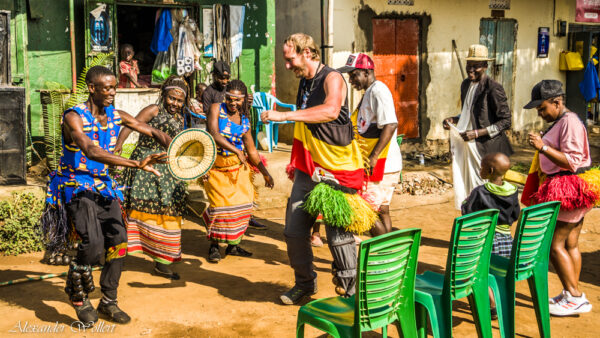Diary Entry
We had a very interesting stay in Kampala and Entebbe, thanks to our Couchsurfing host Winnie. Now we are embarking on a new leg of our East Africa trip: the safari through Uganda.
Ugandans are really night owls. At 5am, the tour guide on our safari calls me out of my sleep and tells me that he has a flat tire on his car. He asks if we can come to him on a motorbike.
I congratulate him and say no. We’re not going to jump up now, look for a motorcycle taxi in the dark and strap our luggage onto it. And then get robbed in the night, for sure. How would that help? I advise him to wake up one of the hundreds of tire repairmen in the city and am confident that we’ll see each other at the agreed time in the morning. Apart from a half-hour delay, it actually works.
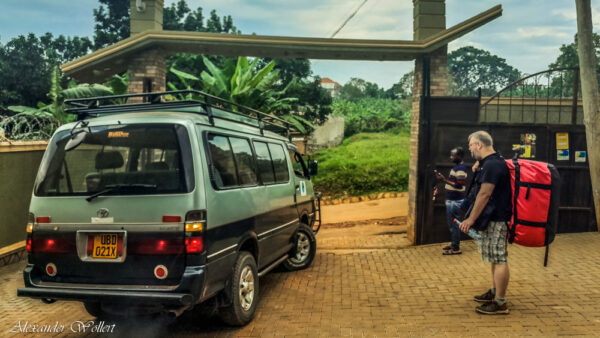
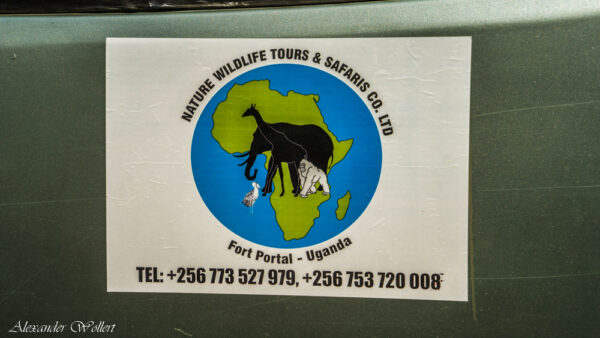
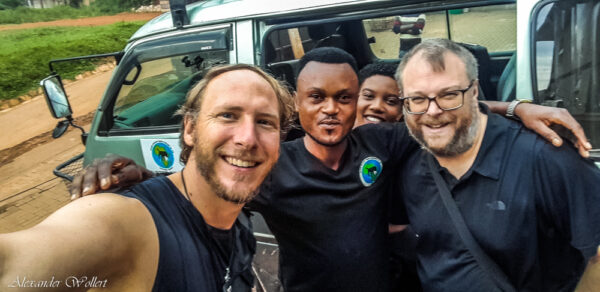
At around 8:30 a.m., Stephen and Monique from Nature & Wildlife Tours greet us in their Toyota Hiace. The car immediately reminds me of my own Hiace in South America.
We leave Kampala and cross the country from east to west.
Our first destination is the town of Fort Portal. The place is actually the portal to the national parks in the southwest of the country. And again we don’t get any lunch because people are always late.
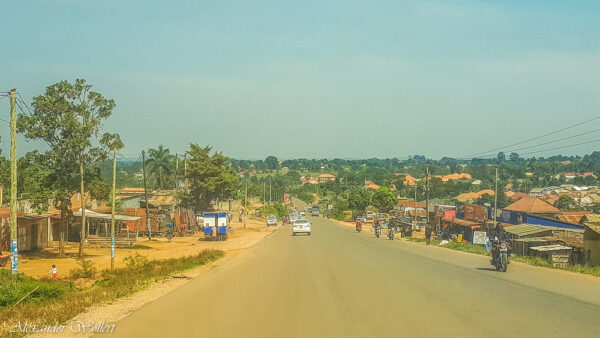

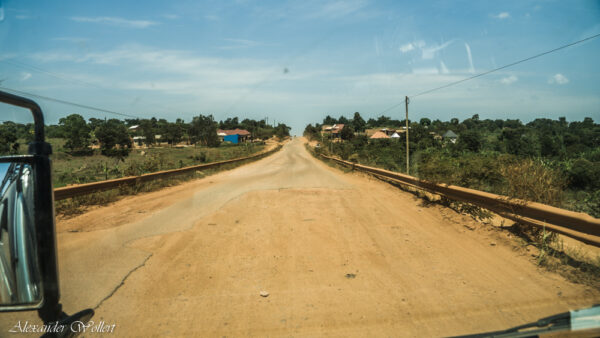

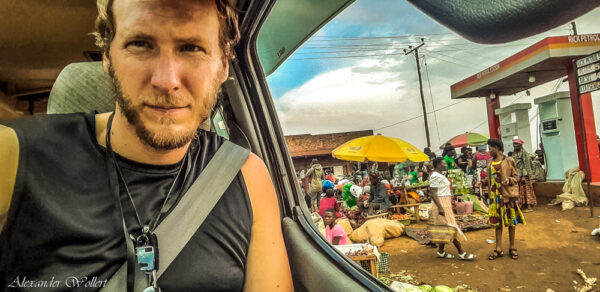
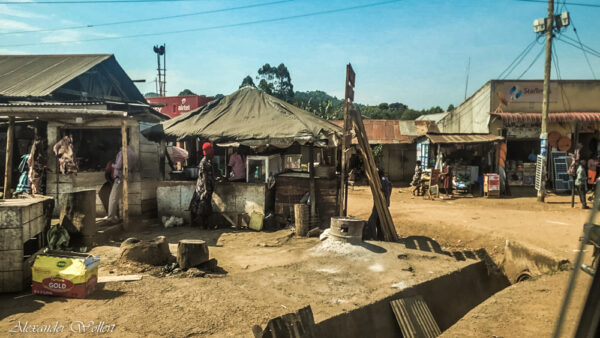
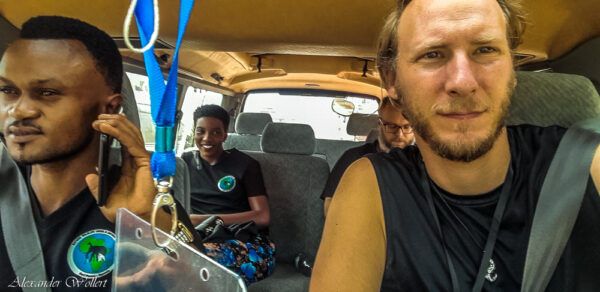
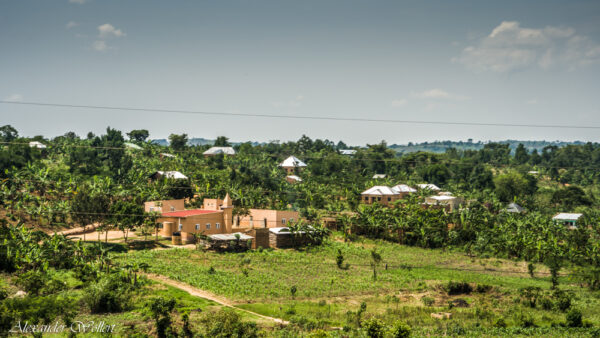
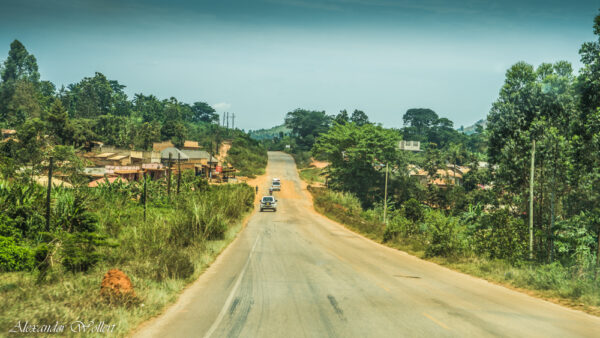


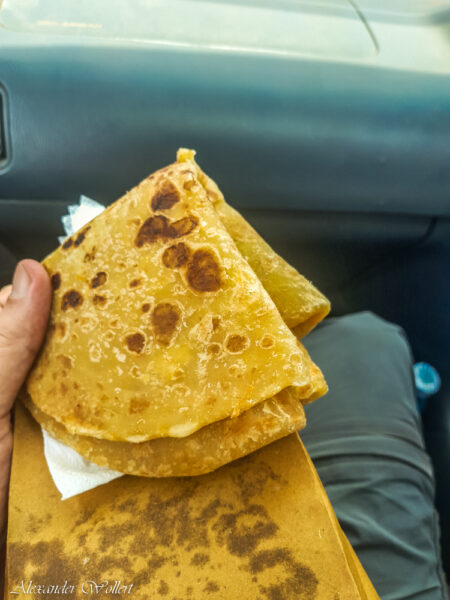
An inconspicuous but good roadside cafe with delicious chapati
We are on the road for five hours. The journey is exciting because we see a lot of the landscape and the people of Uganda. There are many cities and motorways around Kampala. As soon as we leave the greater Kampala area, we pass through mountains and farms.
We see many banana forests, but also vast tea plantations. Apparently Uganda is one of the largest tea producers. But I would have expected a lot more coffee. I also see many small “towers”, which are brick kilns that are built right where bricks are needed.
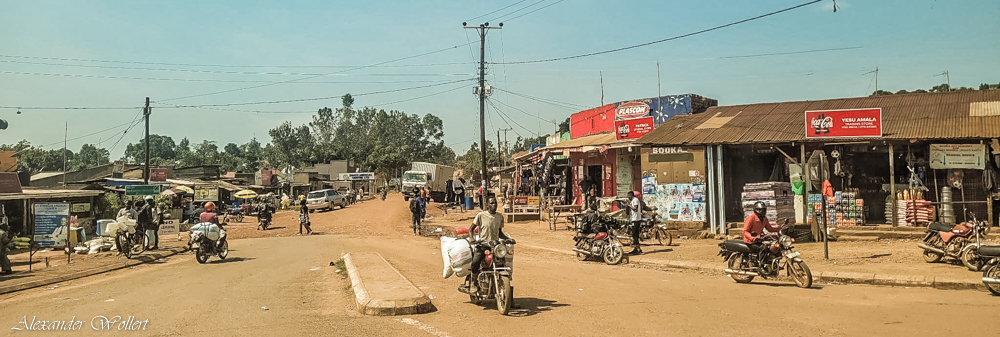
Uganda is more densely populated than I thought. We pass through many small villages where there are small markets, restaurants and, above all, many motorbikes.
Children are happy to see us, but every “Hello” is immediately followed by “give me money“. The children speak that much English.
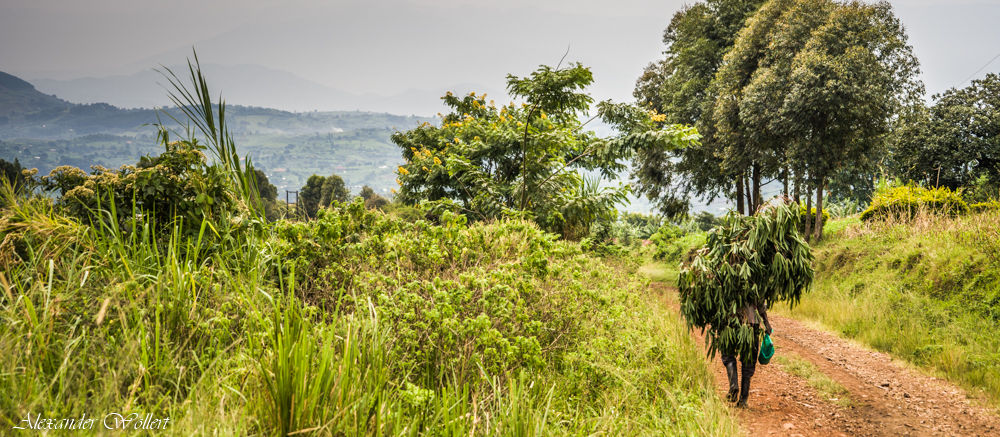
Uganda is also called “The Pearl of Africa”
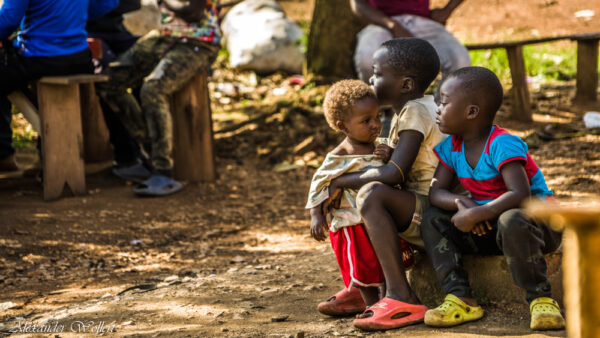
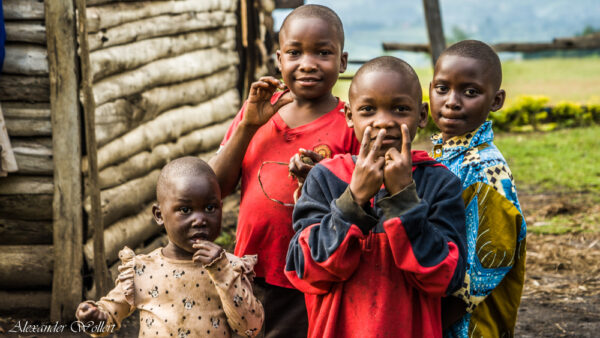
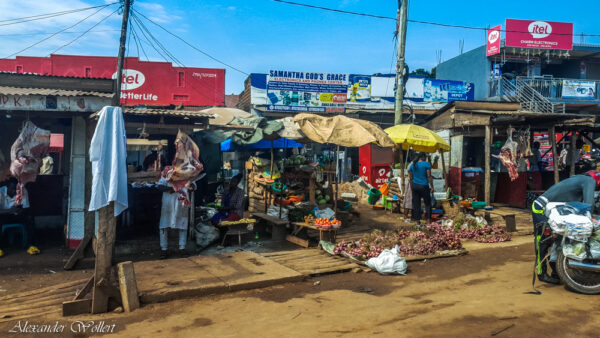
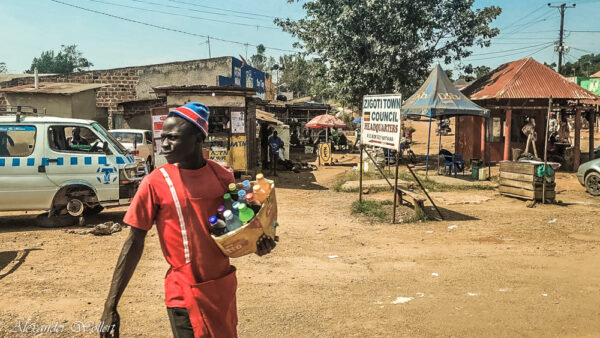
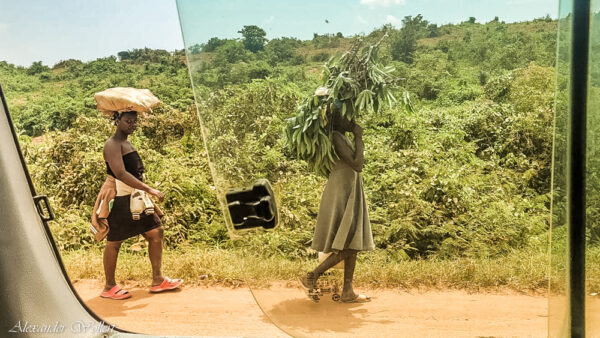
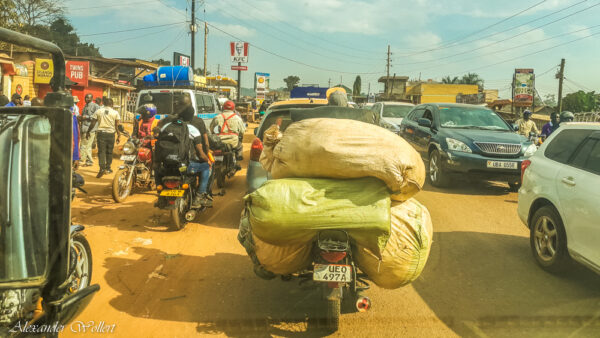
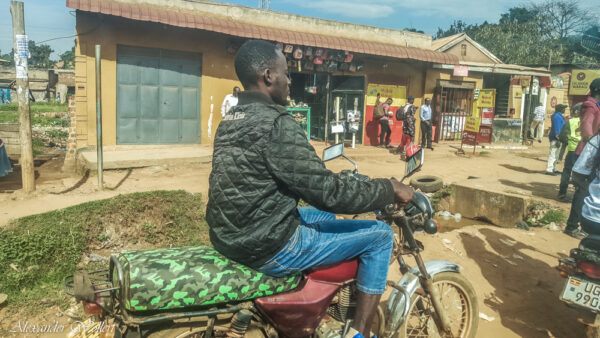
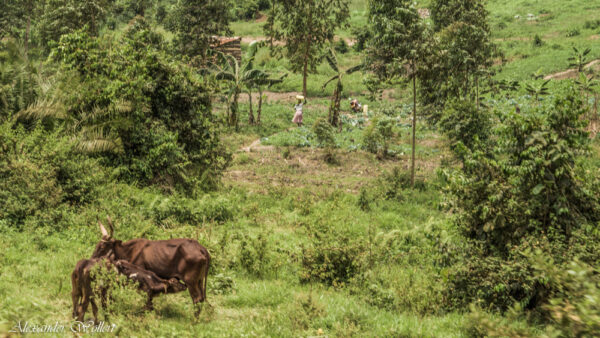
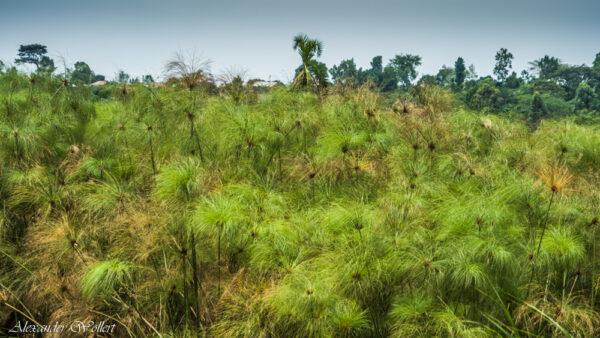
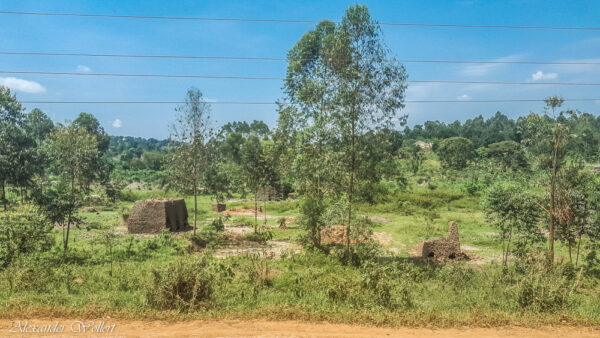
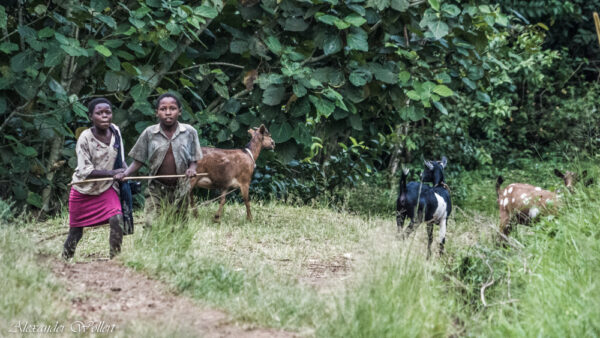

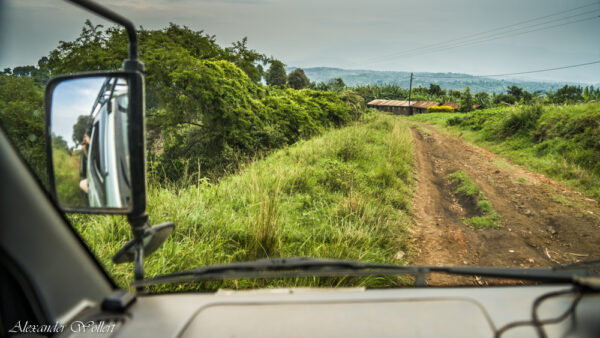
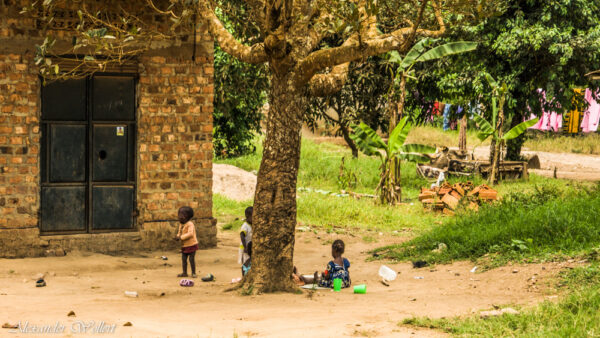
The further we move away from Kampala, the greater the distances between the settlements, which are filled with farms.
There we see people at work and children helping as soon as they are old enough.
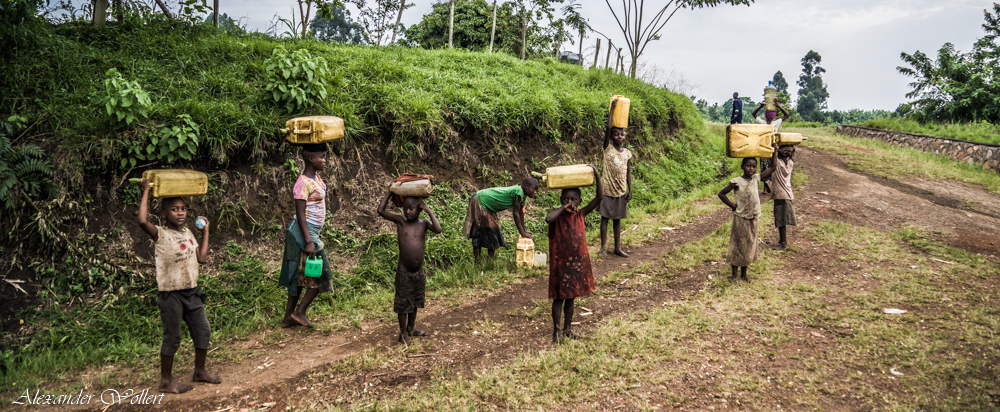

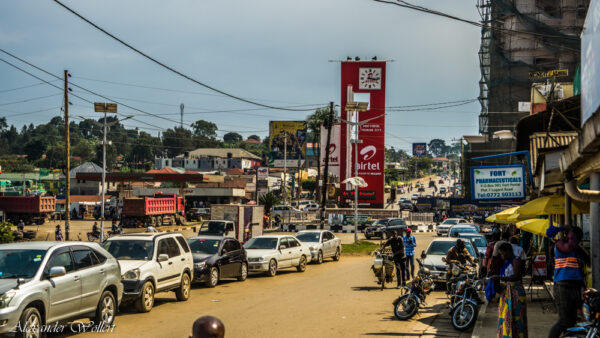
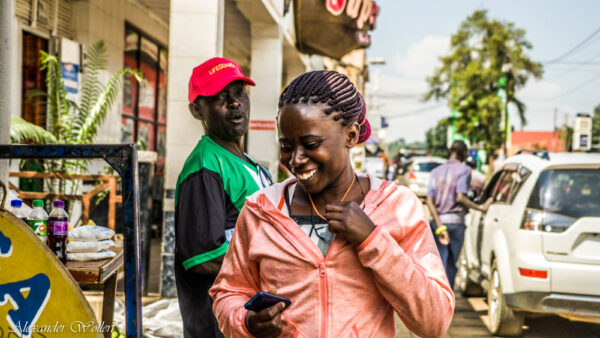
We finally reach Fort Portal and complete a few formalities. We don’t have much time to look around the city. Stephen tells us that Fort Portal is known for being particularly clean. Perhaps this is due to the tourists who want to start their adventure from here.
We don’t see many tourists, but we do see a lot of safari operators who advertise their offers with large signs.
Stephen takes us to his own office, where his guest book and a folklore group are waiting for us.
Want to see more of my trip through East Africa? Check out my full route!
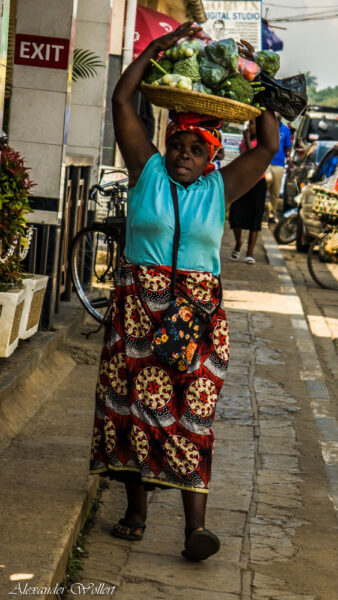
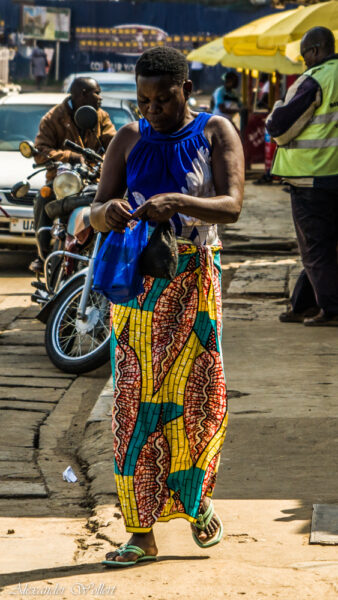
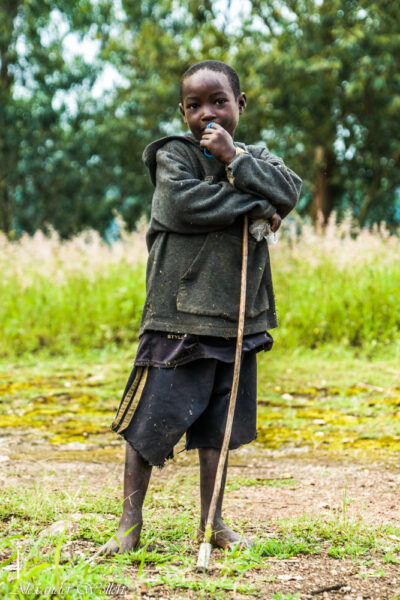
As soon as we reach Stephen’s small office, a group of dancers begins their routine. Who knows how long they have been waiting for us?
After all, we did not arrive at lunchtime as expected, but in the late afternoon.
The Kingdom of Tooro
Tooro is located in southwestern Uganda, on the southern shore of Lake Albert. It was founded in 1822 by Prince Kaboyo Olimi I, who split from his father, the Omukama of Bunyoro-Kitara. The capital of the kingdom is Fort Portal, where the tombs of the royal family are also located.
Tooro was dissolved in 1967 along with other traditional kingdoms of Uganda, but was restored as a cultural institution in 1993. The current Omukama (king) of Tooro is Rukidi IV, who ascended the throne in 1995 at the age of just three.
The Batooro people who live in the kingdom speak Rutooro and share many cultural similarities with the Banyoro. A special tradition is the Empaako naming system, in which children are given one of twelve special names in addition to their given and family name.

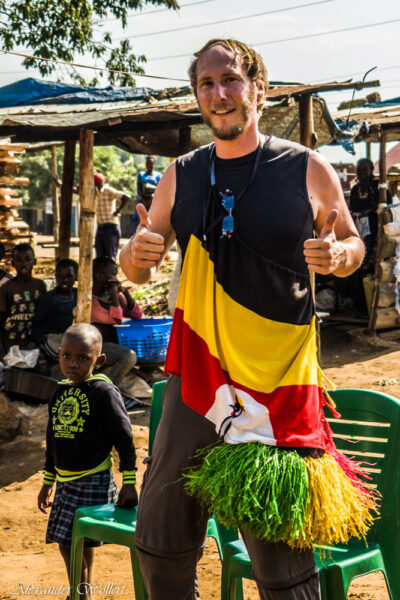
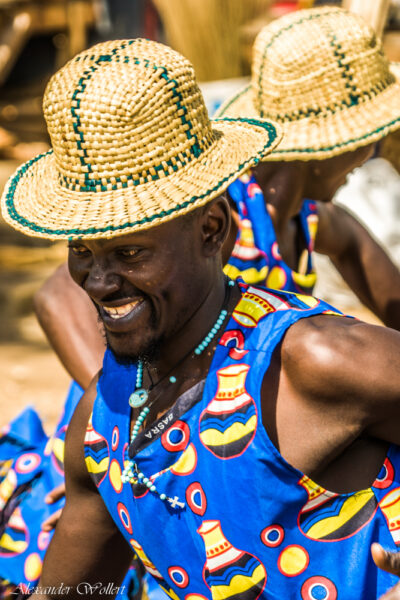
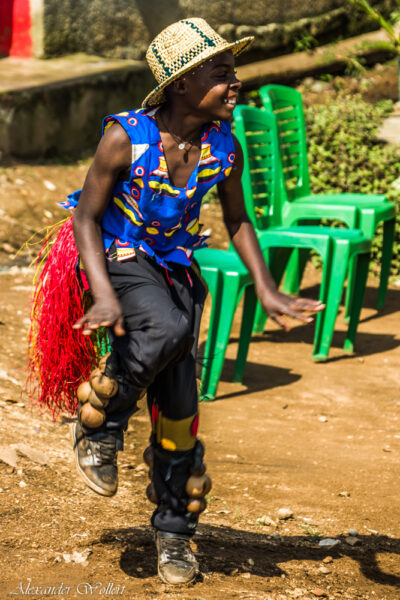
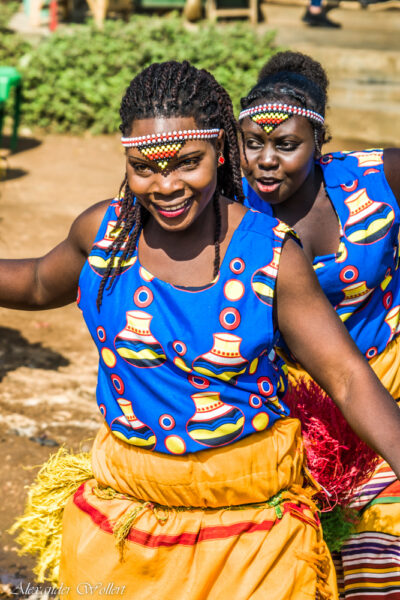
Stephen explains to us that this region used to be a kingdom and that the Batooro people live here and speak Rutooro. I can’t make any sense of the words I’ve just learned from Kampala’s Luganda.
Stephen also explains to us that people here are given an additional name, and this also applies to guests.
Of course, today it is an event specifically for tourists, but at least it has a historical background. I am chosen for the “ceremony” and given a few items with which I can decorate myself. I sit down on a chair while the group dances to loud music from speakers they have brought with them.
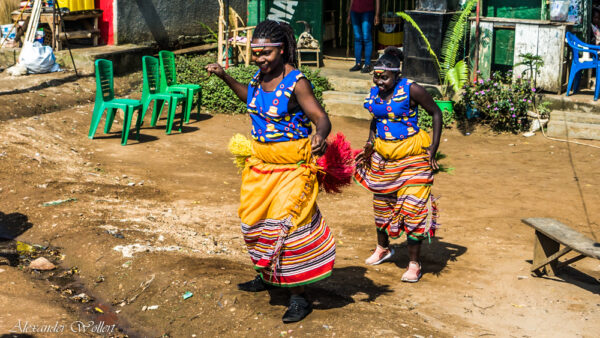
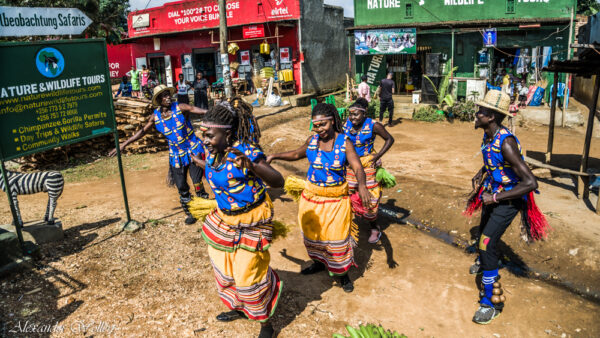
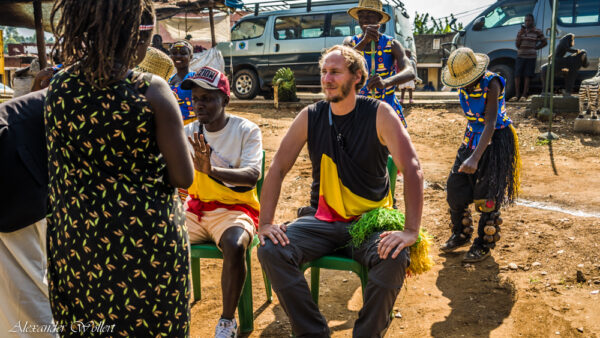

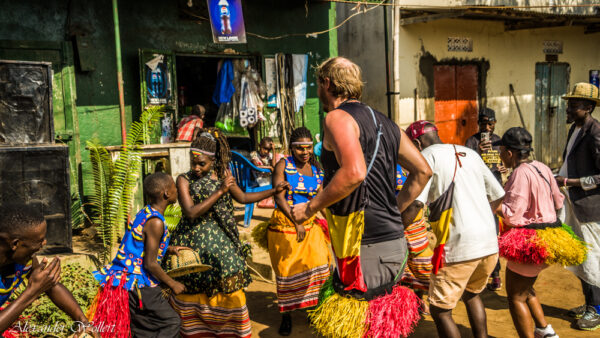
My part of the ceremony is relatively simple. I have to sit on the lap of an elder three times. Then a few suggestions are made as to which of the twelve available names I should receive.
Then the community votes on it and we dance. I am to be given the name “Araali“. We dance a little more until we have to move on. Not far from here there are volcanic lakes that we visit.

